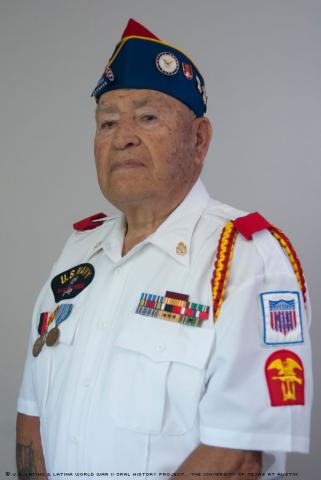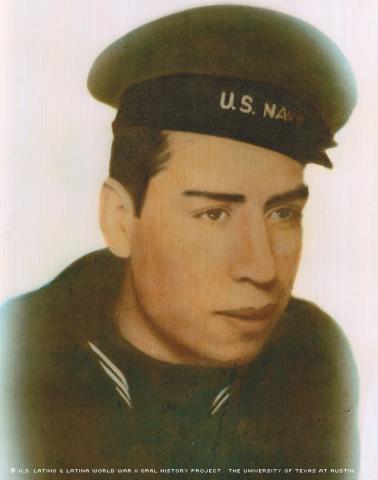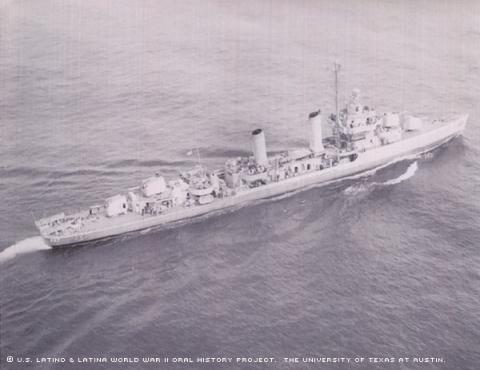



By Nicole Chisum
The turmoil of World War II was difficult for everyone who endured it, but perhaps even more so for people who felt left out of mainstream society.
People like Ben Santillan.
Santillan was born on Feb. 13, 1925, near Kansas City, Kan. When he was about 7 years old, his family moved to Argentine, a suburb of Kansas City, and lived in the Mexican part of the town known as el campo. It was far from luxurious, and it was segregated -- Mexicans and non-Mexicans.
Santillan, who grew up with two brothers and two sisters, recalled that they had to walk four miles to school because as Latinos they were not allowed to use the bus system. Santillan did not attend first grade until he was 8, and he made it through ninth grade before he had to leave school to help provide for his family. He worked at an ice plant.
His father, Julian, worked on the railroad, and his mother, Francisca, stayed home to raise the children. The house had no electricity, no indoor plumbing. The family lacked a vehicle, new clothing, and substantial food for the children. Still, Santillan said, the family considered itself lucky to be living in the United States. His parents, who moved to the U.S. in 1918 from Leon, Guanajuato, Mexico, hoped for a better life for their family and educational opportunities for the children.
Santillan recalled that the day he learned about the 1941 attack on Pearl Harbor, he was enjoying an afternoon with his friends at the movies and at a pool hall. One friend asked if he had heard about the Japanese and Pearl Harbor, and he asked, “What is Pearl Harbor?” At that moment, the decision to enlist was an easy one.
But actual enlistment did not go as smoothly as he planned. He and two friends wanted to enlist together, but in September 1942 he was the only one who showed up. And then, because of overcrowded barracks, he was not immediately sent to boot camp. As Santillan awaited orders, he worked odd jobs, including unloading railroad boxcars.
Santillan went on active duty on Dec. 23, 1942. He spent 10 grueling weeks at the Great Lakes Naval Training Station in Illinois and then advanced training in gunnery school. During training, and later in the war, Santillan recalled that “the best thing I remember is the good friends I made from the beginning -- good guys, all of them.”
Once he finished training, Santillan was made a gunner’s mate, assigned to the USS Thorn, and sent to New York City. From New York, he made two trips across the Atlantic as part of a screen of warships protecting the convoys delivering supplies to Allied forces in Europe,. When his ship returned to the U.S., he was transferred to a Pacific fleet. He later served on the USS Sarasota, a combat troop ship, and saw combat off the coast of New Guinea.
Part of his duties included servicing a 50-caliber machine gun, a 20mm anti-aircraft gun, a 40mm anti-aircraft gun, and a 5-inch gun.
Santillan was discharged on Jan. 16, 1946, in St. Louis as a gunner’s mate third class. Medals earned for his service included the Philippine Liberation Medal, the Good Conduct Medal and decorations for service in Europe and the South Pacific.
Looking back, he didn’t feel that history properly honors Latino veterans. “I don’t think we have been given the recognition that we deserve,” he said.
When he returned home, the G.I. Bill helped him complete some college courses, including typing, math and English. On May 18, 1947, he married his wife, Rachel, and they had four children.
When he looked back on his life, Santillan said he had no regrets. While he wished he had more education, he believed enlisting was something he had to do.
When asked what advice he would give to fellow Latinos, he said simply, “Get an education.”
Mr. Santillan was interviewed on June 17, 2010, in Kansas City, KS, by Mary Gonzales.

